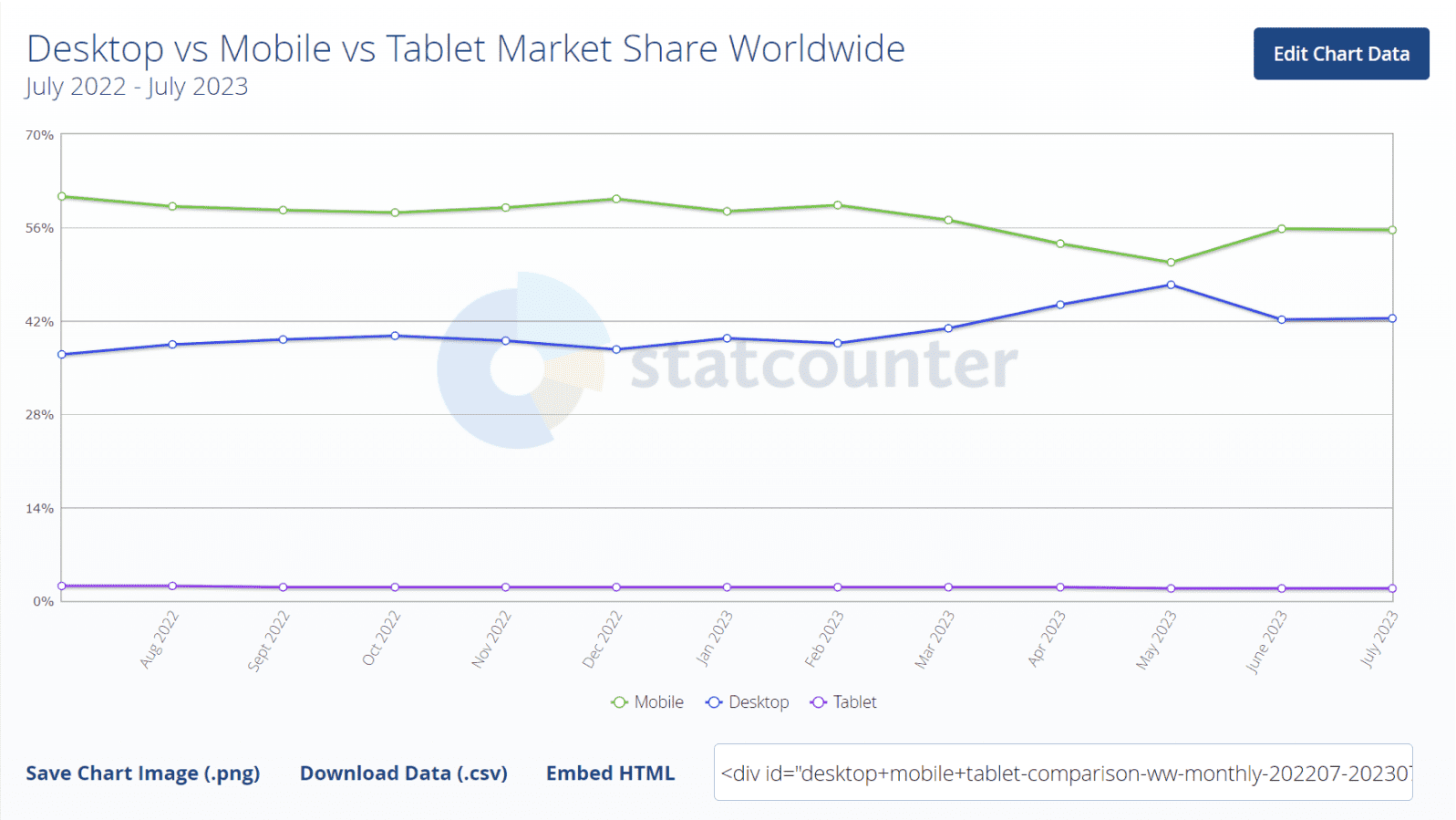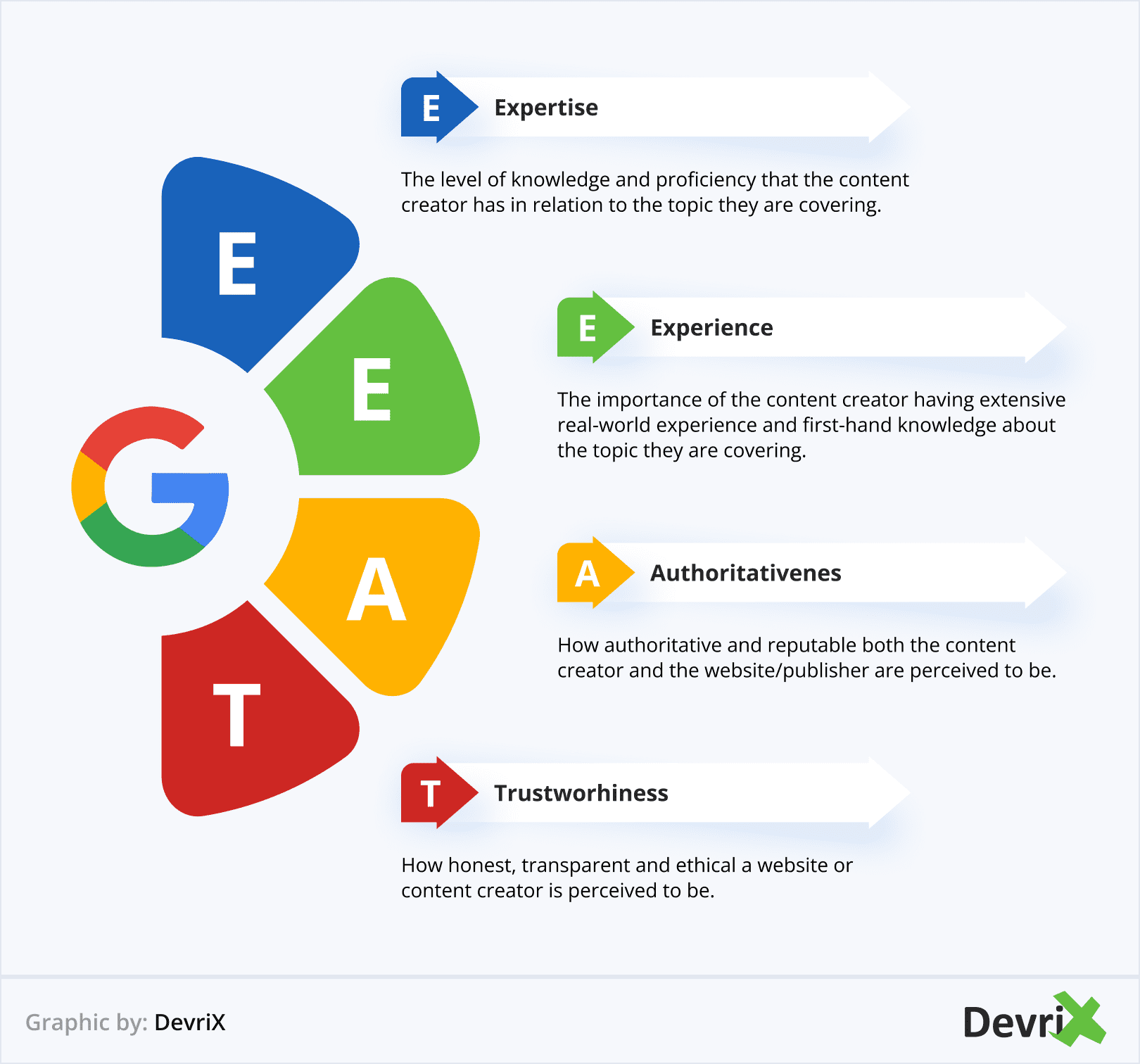As more and more people use their phones and tablets to surf the web and shop online, it’s clear we’re living in a mobile world. These days over 90% of internet users are tapping into the web on their mobile devices. Mobile traffic makes up 55% of all website visits.
Mobile SEO has become super important if you want your business to be found and connect with potential customers. If your site doesn’t stack up on mobile, you’re missing out on a huge chunk of traffic and opportunities in this mobile-first era we’re now in.
So let’s chat about where mobile SEO is headed and how you can take your strategy to the next level.
Why Is SEO Important?
The main reason Search Engine Optimization (SEO) exists is to help people find you and your business. 54 % of all clicks go to the top 3 search results.
Ranking results in high traffic to your site, boosted brand awareness (68% of online experiences start with a search engine), and ultimately, increased sales. So if you’re on page one, you’ve found yourself a prime spot for your products.
Why Is Mobile SEO So Important?
Mobile SEO optimization is important for two main reasons:
- Mobile Searches Are on the Rise, While Desktop Searches Are Decreasing. Most people find tapping and swiping on their mobile devices quicker and easier than hunching over desktops for surfing and shopping. The convenience factor means mobile will continue to rule the search world.

- Google Uses Mobile-First Indexing. Google’s been using mobile-first indexing for a while now (six years to be exact). But in 2023, this transition process is done. Desktop indexing ain’t dead, but it’s taking a backseat.That means the mobile version of your site is the main version Google looks at when ranking pages. What does this mean for businesses? If the mobile experience is weak, your rankings could take a hit.
Readers Also Enjoy: How to Optimize Your Mobile Strategy: 9 Tips – DevriX
Top 3 Trends in SEO Beyond 2023
Before optimizing your website for mobile, it’s crucial to keep yourself updated on the latest trends driving SEO forward.
Voice Search Optimization
Voice search is blowing up – nearly half of adults and teens in the US use voice tech like Siri daily. 85% of consumers consider voice search “the future”. Yes, people find yelling at their phones more convenient than typing and this trend is not going anywhere.
As people don’t speak as they write, voice searches tend to be more natural-sounding and longer. Brands need to optimize content for voice queries which tend to be more conversational and longer like: “Which are the best WordPress agencies in the world?” vs. than “Best WordPress agencies”.
E-E-A-T
Formally known as E-A-T, E-E-A-T is a set of guidelines that Google uses to evaluate the quality and reliability of websites. In the end of 2023 Google introduced one more “E” into E-A-T:
- E is for Expertise. this means the website should demonstrate in-depth knowledge and expertise on the topic it covers. content should be created by professionals who know their stuff.
- E is for Experience (the new “E”). This refers to the website having significant experience in their field.
- A is for Authoritativeness. The site should be viewed as an authority on its subject. Other reputable sites should be able to link to or reference it as a source. The more authoritative, the better.
- T is for Trustworthiness. This means users, other sites, and Google should be able to trust the information presented. Fact-checking, transparency and ethical practices help build trust.
Sites that want to rank well need to really know their topic, have real-world experience, be viewed as authoritative sources, and gain users’ trust through ethical and transparent practices.

Artificial Intelligence and Machine Learning
By 2024, artificial intelligence and machine learning will be playing a major role in search engine optimization.
AI will be used to generate content, analyze data, and provide insight on how to improve website ranking. Their algorithms will study search patterns and optimize sites automatically based on user behavior. Chatbots and virtual assistants will sound more natural thanks to natural language optimization. Image recognition AI will enhance image SEO and alt text. Voice search optimization will rely on AI processing spoken queries.
If you want to leverage AI for SEO, create high-quality, relevant content. Use AI for keyword research, content optimization and data analysis – this will give you a competitive edge. Embracing the latest tech today locks in your success tomorrow.
Readers Also Enjoy: How Artificial Intelligence Affects Digital Marketing – DevriX
How To Optimize for Mobile in 2023
Mobile SEO is straight up mandatory for any brand wanting to crush it in the future.
Here are some key mobile SEO practices you need to lock down in terms of optimizing content and technical aspects:
Optimizing Content for Mobile
If you hope to rank highly in mobile-first indexing, craft content specifically for easy consumption on smaller screens:
- Use short, descriptive titles. Long titles get cut off in mobile SERPs. Keep keywords to the front and make sure titles clearly convey the topic.
- Write tightly. Content should be scannable with key information up front. Use short paragraphs and lists when applicable.
- Add subheadings. Break up long form content with descriptive subheadings to aid skimming on small screens.
- Get to the point faster. Lead with the most important information instead of lengthy introductions, especially for news/timely content.
- Prioritize readability. Use text formatting for scannability. Break up dense text with spacing, indentation and line breaks.
- Chunk content into short “cards”. Where applicable, divide content into bite-sized sections. Easier to digest on small screens.
- Use bulleted/numbered lists. Lists help break up walls of text. Easier to view on mobiles.
- Bold key terms. Draw attention to important keywords that users scan for.
- Be careful with the images. Too many large images slow page load speed. Use responsively sized images with metadata.
- Optimize the images. Add descriptive alt text and file names with target keywords. Useful if images don’t load.
- Videos should be mobile-friendly. If including videos, ensure they are designed for vertical viewing. Optimize titles/descriptions.
- Include meta descriptions. Well-written descriptions improve click-through-rates on search engine results pages.
- Interlink content. Internal links between related content boosts site navigation and SEO.
- Leverage structured data. Adding schema markup helps search engines understand content.
Mobile Optimization for Technical Aspects
Making sure your site performs great on phones means focusing on technical aspects. You have to nail responsive design so it looks awesome on tiny screens. Tighten up your code so things load fast. Dial in all those little details to keep visitors happy and engaged such as:
- Responsive Design. Responsive design is the foundation of effective mobile optimization. This approach ensures that content and layout adjust dynamically, providing users with a consistent and comfortable experience, regardless of the device they are using.
- Mobile-Friendly UI/UX. Designing a mobile-friendly user interface (UI) and user experience (UX) is crucial. Elements like appropriately sized buttons, readable fonts, intuitive navigation, and touch-friendly controls are essential when interacting withsmaller screens.
- Page Speed Optimization. Mobile users often have limited bandwidth and slower network connections compared to desktop users. Optimizing page speed by minimizing code, compressing images, and using browser caching can significantly improve loading times, reducing bounce rates and enhancing user engagement.
- Accelerated Mobile Pages (AMP). AMP is an open-source framework that allows developers to create lightweight and fast-loading mobile web pages.
- Minimize Redirects. Minimize unnecessary redirects to ensure that users quickly access the content they’re looking for without unnecessary delays.
- Cross-Browser Compatibility. Ensure that your mobile-optimized site functions seamlessly across different mobile browsers and operating systems.
- Code Optimization. Efficient coding practices, such as minimizing unnecessary JavaScript, CSS, and HTML, can contribute to faster load times and smoother performance on mobile devices.
- Touch and Gesture Support. Designing for touch and gesture interactions is important. all interactive elements need to be appropriately sized and spaced to prevent accidental taps and swipes.
Readers Also Enjoy: Ecommerce Content Marketing: Creating Content That Drives Sales – DevriX
Wrap-Up
In conclusion, mobile-first indexing has overturned the game – mobile SEO is now
mandatory, and not just an afterthought. If your site doesn’t deliver an awesome user experience on phones, you’re taking your rankings. If you need a helping hand with your SEO here at Devrix we are full E-E-A-T. Give us a call!


![Hottest Influencer Marketing Trends for Ecommerce [2023]](https://devrix.com/wp-content/uploads/2023/08/Hottest-Influencer-Marketing-Trends-for-Ecommerce-2023-380x160.png)

![Small Business SEO Top 7 Benefits [2023]](https://devrix.com/wp-content/uploads/2021/12/Small-Business-SEO_-Top-7-Benefits-2023-380x160.png)